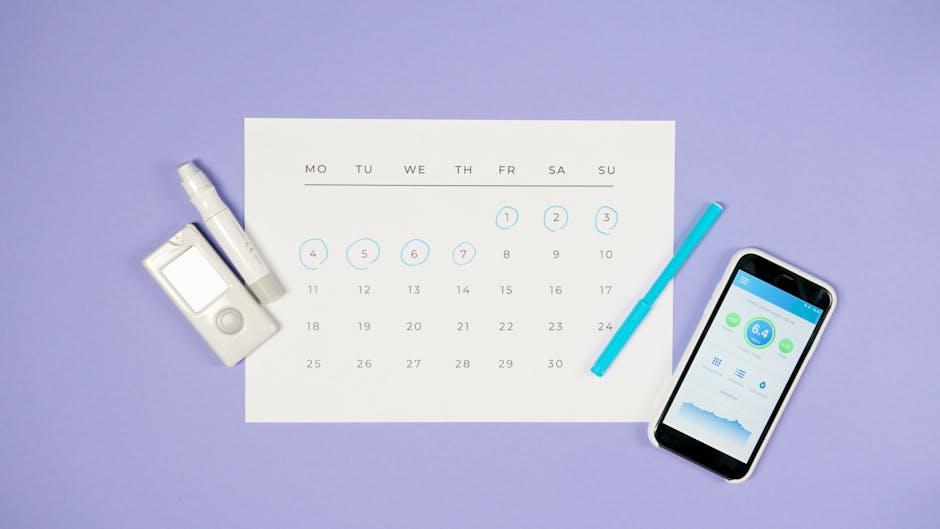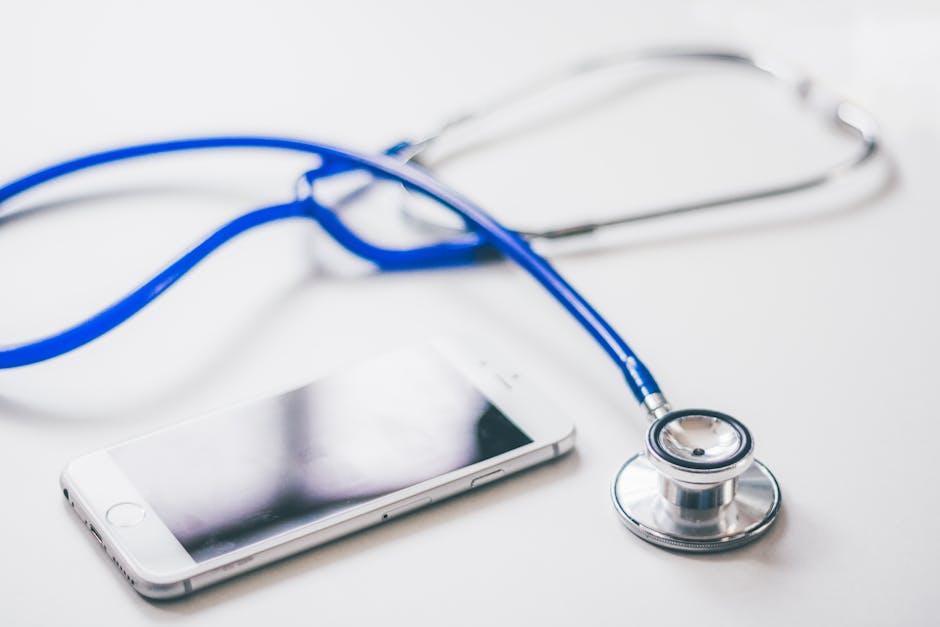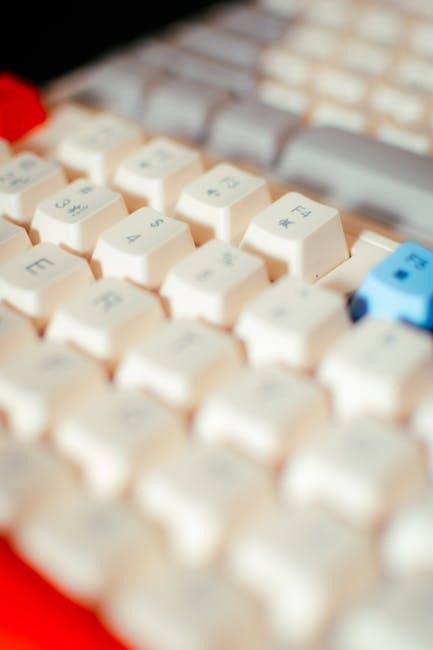In a world where our smartphones have become almost like an extension of ourselves, their role extends far beyond mere communication or entertainment. Increasingly, these pocket-sized devices are transforming into powerful tools for mental health monitoring, offering new avenues for understanding and managing emotional well-being. By harnessing the sensors, apps, and data-processing capabilities embedded in everyday phones, technology is quietly reshaping how we observe psychological states-turning ordinary devices into personal mental health companions. This article explores the emerging landscape where smartphones intersect with mental health, illuminating both the promise and the complexities of this digital frontier.
The Role of Smartphones in Early Detection and Intervention

Smartphones have revolutionized how we approach mental health by acting as powerful tools for early identification of psychological distress. Through a combination of passive data collection and active user input, these devices can detect subtle behavioral changes that often precede more visible symptoms. For instance, reduced communication, altered sleep patterns, and changes in physical activity can be monitored seamlessly using smartphone sensors and apps. This continuous, real-time data allows for timely alerts, enabling users and their support networks to recognize potential issues before they escalate.
Several innovative features enhance the effectiveness of smartphones in this realm:
- Automated Mood Tracking: Users can record their emotional states easily, with apps leveraging AI to analyze patterns over time.
- Geolocation Monitoring: Tracking movement can reveal social withdrawal or isolation tendencies, critical for early intervention.
- Communication Analysis: Variations in texting or calling frequency can serve as indicators of mental health changes.
| Feature | Purpose | Benefit |
|---|---|---|
| Mood Analytics | Assess emotional trends | Identifies mood swings early |
| Sleep Tracking | Monitor rest patterns | Detects potential insomnia or fatigue |
| Activity Logs | Track physical movement | Highlights decreased mobility |
Leveraging Sensor Data for Personalized Mental Health Insights

Smartphone sensors act as silent witnesses to our daily rhythms, capturing subtle clues that can reveal shifts in emotional well-being. From accelerometers tracking physical activity to microphones detecting ambient sounds, these embedded tools aggregate a wealth of passive data without burdening the user. By analyzing sleep patterns, social interactions, and even typing speed, apps can construct a tailored mental health profile that evolves with the individual. This dynamic feedback loop enables early detection of mood changes, providing users and clinicians with critical insights that traditional self-reporting might miss.
To transform raw sensor output into meaningful guidance, machine learning algorithms sift through diverse data streams, identifying behavioral signatures linked to stress, anxiety, or depression. These analytics empower personalized recommendations such as:
- Adjusting daily routines to improve sleep quality
- Prompting mindfulness exercises during periods of low activity
- Highlighting social withdrawal for timely intervention
Below is a simplified overview of key sensor inputs and their mental health implications:
| Sensor | Tracked Behavior | Mental Health Insight |
|---|---|---|
| Accelerometer | Physical activity levels | Detects inactivity linked to mood dips |
| Microphone | Ambient sound & conversation | Monitors social engagement |
| GPS | Movement patterns | Identifies social isolation or routine changes |
| Screen usage | Interaction frequency | Reveals potential anxiety triggers |
Privacy and Ethical Considerations in Mobile Mental Health Monitoring

As smartphones become indispensable tools in mental health monitoring, safeguarding user privacy emerges as a paramount concern. The sensitive nature of psychological data demands robust encryption protocols and transparent data handling policies. Without stringent privacy controls, individuals risk exposure of their most intimate thoughts and emotions, potentially leading to stigma or discrimination. Developers and health practitioners must ensure users retain full control over their personal information, including options to customize data sharing and delete stored records at any time.
Ethical implementation of mobile mental health tools further requires thoughtful consideration of potential biases, consent, and user autonomy. Key factors include:
- Informed Consent: Clear communication about what data is collected and how it will be used.
- Bias Mitigation: Algorithms must be regularly audited to prevent reinforcing stereotypes or excluding minority groups.
- User Empowerment: Promoting agency by allowing users to interpret their data, rather than relying solely on automated conclusions.
| Consideration | Practical Application |
|---|---|
| Data Minimization | Collect only essential information |
| Transparency | Regular updates on data policies |
| Accountability | Third-party audits of security measures |
| User Control | Easy data export and deletion options |
Best Practices for Integrating Smartphone Tools into Clinical Care

Incorporating smartphone tools into clinical care demands a thoughtful approach that balances innovation with patient privacy. Clinicians should prioritize data security protocols, ensuring that any app or device used complies with healthcare regulations such as HIPAA. Equally important is fostering patient engagement by selecting tools that are intuitive and culturally sensitive, promoting consistent use. Collaborative decision-making between clinicians and patients can personalize monitoring routines, enhancing trust and adherence.
To optimize the integration process, consider adopting a phased implementation strategy where technology is introduced gradually, allowing both practitioners and patients to adapt. Additionally, regular training sessions for healthcare providers can improve digital literacy and comfort with new tools. Below is a brief overview of essential strategies for seamless integration:
- Prioritize Privacy: Use encrypted platforms and obtain informed consent.
- Ensure Accessibility: Choose apps compatible across various devices and user abilities.
- Customize Monitoring: Align smartphone data collection features with individual patient needs.
- Provide Support: Offer technical assistance and continuous education for users.
| Best Practice | Key Benefit |
|---|---|
| Data Encryption | Protects patient confidentiality |
| User-Centered Design | Enhances engagement and usability |
| Phased Rollout | Reduces adoption barriers |
| Ongoing Training | Boosts clinician confidence |
Insights and Conclusions
As the lines between technology and well-being continue to blur, smartphones emerge not just as communication devices but as quiet guardians of our mental health. They offer a nuanced lens into the complexities of the human mind-tracking moods, habits, and behaviors with a subtlety that was once unimaginable. While they are not a replacement for professional care, these pocket-sized tools hold the promise of early detection and ongoing support, inviting us to rethink how we engage with mental wellness in a digital age. In embracing this evolving landscape, we take one more step toward a future where mental health care is not only accessible but intimately woven into the fabric of our daily lives.














